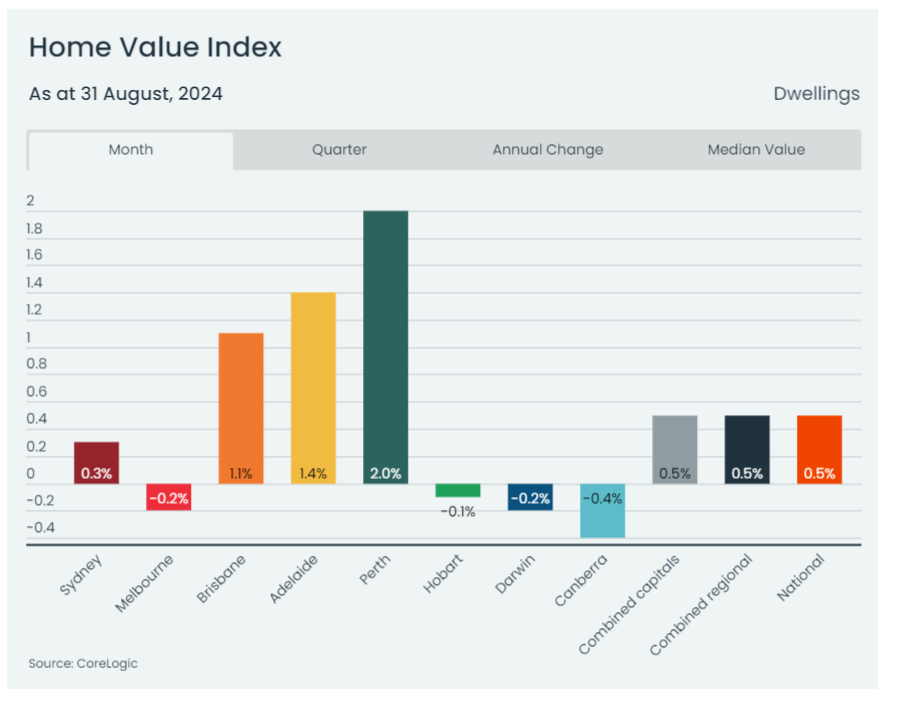

Australian home values continued to rise in August with a 0.5% uptick, marking the 19th consecutive month of increases, but the pace of growth is slowing, with the quarterly increase down to 1.3%, less than half the rate seen in the same period of 2023, CoreLogic reported.
“Affordability constraints are a key factor behind the broader slowdown,” said Eliza Owen (pictured above), CoreLogic’s head of research.
In a significant shift, Melbourne’s median dwelling value has fallen below that of Perth and Adelaide, now ranking as the third lowest among Australia’s capital cities.
“This is the first time that Perth’s median dwelling value has been higher than Melbourne’s since February 2015,” Owen said, highlighting the impact of market conditions and housing supply.
Housing value growth varied across cities, with Perth leading at a 2% increase, while Melbourne and Canberra saw declines.
Brisbane’s quarterly growth slowed significantly from 4.1% in May to 2.9% in August, reflecting the broader trend of cooling demand in previously hot markets, CoreLogic reported.
The national rental market is also showing signs of easing, with the CoreLogic hedonic rent index remaining unchanged for the second consecutive month in August.
“Rent growth is likely slowing due to a combination of supply and demand factors,” Owen said, noting a decrease in net overseas migration and a slight uptick in household size.
See LinkedIn post here.
As the spring selling season approaches, sellers are advised to be mindful of local market conditions. Despite tight stock levels in many regions, some areas like Victoria and Tasmania are seeing an accumulation of listings amid soft price performance.
“There is no guarantee that buyer numbers will rise to meet the seasonal uplift in listings,” Owen said.
Get the hottest and freshest mortgage news delivered right into your inbox. Subscribe now to our FREE daily newsletter.
